#Julie Higginbotham
Photo

Julie Higginbotham. Dog in car, Bondi. 1974
I Am Collective Memories • Follow me, — says Visual Ratatosk
#BW#Black and White#Preto e Branco#Noir et Blanc#黒と白#Schwarzweiß#retro#vintage#Julie Higginbotham#1974#1970s#70s#dog#cachorro#cadela#Hund#chien#cjhienne#犬
76 notes
·
View notes
Text
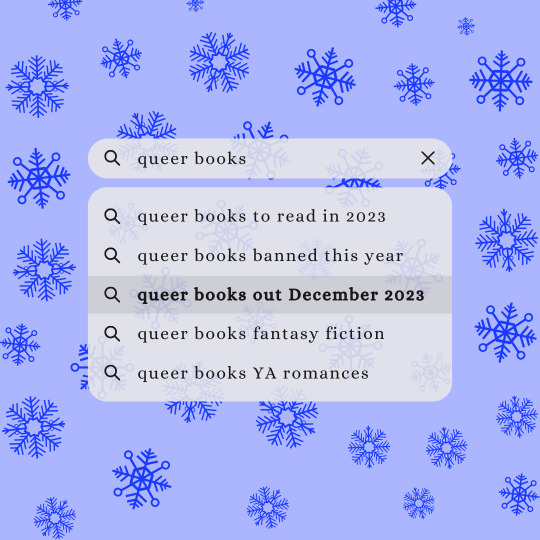
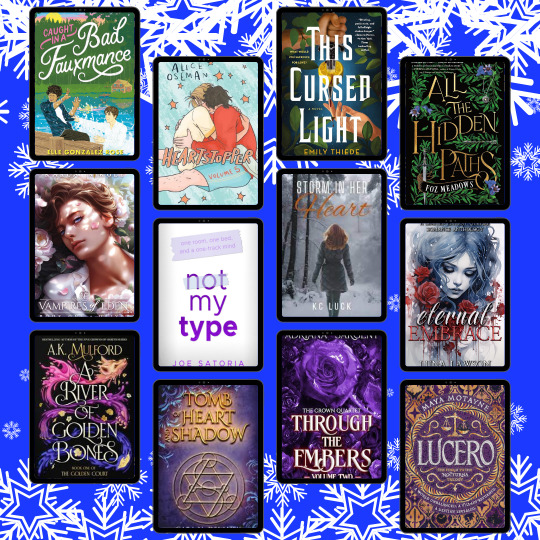

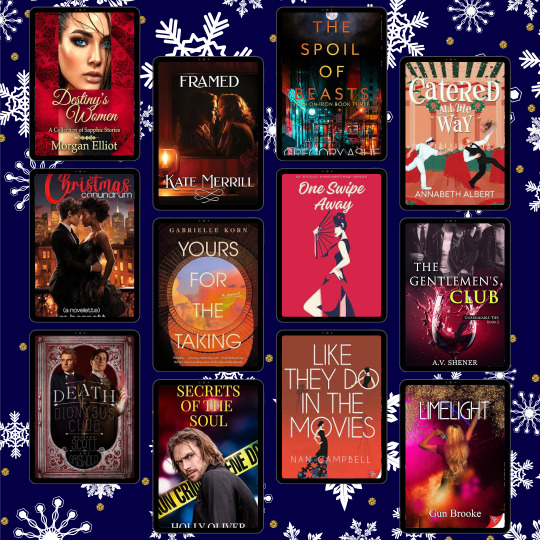


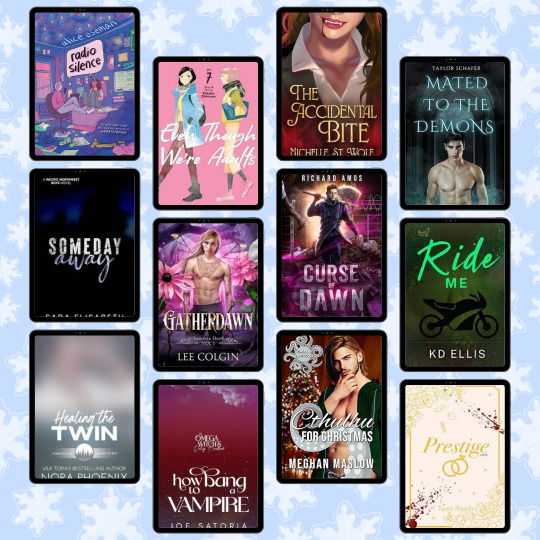

🌈 Queer Books Out December 2023 🌈
🌈 Good afternoon, my bookish bats! Struggling to keep up with all the amazing queer books coming out this month? Here are a FEW of the stunning, diverse queer books you can add to your TBR before the year is over. Remember to #readqueerallyear! Happy reading!
❤️ Caught in a Bad Fauxmance by Elle Gonzalez Rose
🧡 Heartstopper #5 by Alice Oseman
💛 This Cursed Light by Emily Thiede
💚 All The Hidden Paths by Foz Meadows
💙 Vampires of Eden: Book One by Karla Nikole
💜 Not My Type by Joe Satoria
❤️ Storm in Her Heart by KC Luck
🧡 Eternal Embrace by Luna Lawson
💛 A River of Golden Bones by A.K. Mulford
💙 Tomb of Heart and Shadow by Cara N. Delaney
💜 Through the Embers Volume 2 by Adriana Sargent
🌈 Lucero by Maya Motayne
❤️ The Poison Paradox by Hadley Field & Felix Green
🧡 Second Chances in New Port Stephen: A Novel by TJ Alexander
💛 Matrimonial Merriment by Nicky James
💚 Under the Christmas Tree by Jacqueline Ramsden
💙 Every Beat of Her Heart by KC Richardson
💜 The Memories of Marlie Rose by Morgan Lee Miller
❤️ Playing with Matches by Georgia Beers
🧡 Always Only You by Chloe Liese
💛 Fire in the Sky by Radclyffe and Julie Cannon
💙 Nuclear Sunrise by Jo Carthage
💜 The Naked Dancer by Emme C. Taylor
🌈 Resurrections by Ada Hoffmann
❤️ Destiny’s Women by Morgan Elliott
🧡 Framed by Kate Merrill
💛 The Spoil of Beasts by Gregory Ashe
💚 Catered All the Way by Annabeth Albert
💙 A Cynic’s Christmas Conundrum by L.M. Bennett
💜 Yours for the Taking by Gabrielle Korn
❤️ One Swipe Away by Nicole Higginbotham-Hogue
🧡 The Gentlemen’s Club by A.V. Shener
💛 A Death at the Dionysus Club by Melissa Scott and Amy Griswold
💙 Secrets of the Soul by Holly Oliver
💜 Like They Do in the Movies by Nan Campbell
🌈 Limelight by Gun Brooke
❤️ Heart First by S.B. Barnes
🧡 Grave Consequences by Sandra Barret
💛 Haunted by Myth by Barbara Ann Wright
💚 Invisible by Anna Larner
💙 The Murders at Sugar Mill Farm by Ronica Black
💜 Coasting and Crashing by Ana Hartnett
❤️ Fairest by K.S. Trenten
🧡 A City of Abundant Opportunity by Howard Leonard
💛 The Dark Side of MIdnight by Erin Wade
💙 Mending Bones by Merlina Garance
💜 Transform by Connal Braginsky & Sean Ian O’Meidhir
🌈 The Apple Diary by Gerri Hill
❤️ TruLove by Nicole Pyland
🧡 Structural Support by Sloan Spencer
💛 Whiskey War by Stacy Lynn Miller
💚 Overkill by Lou Wilham
💙 Heart of Outcasts by Nicole Silver
💜 In the Shadow of Victory by J. E. Leak
❤️ Just Like Her by Fiona Zedde
🧡 Gingerbread: Claus For Christmas by Miski Harris
💛 Lies are Forever by C. Jean Downer
💙 The Boys in the Club by M.T. Pope
💜 Lasting Light (Metal & Magic) by Michelle Frost
🌈 Tell No Tales by Edie Montreux
❤️ Radio Silence by Alice Oseman
🧡 Even Though We're Adults Vol. 7 by Takako Shimura
💛 The Accidental Bite by Michelle St. Wolf
💚 Mated to the Demons by Taylor Schafer
💙 Someday Away by Sara Elisabeth
💜 Gatherdawn Luminia Duet Volume 1 by Lee Colgin
❤️ Curse of Dawn by Richard Amos
🧡 Healing the Twin by Nora Phoenix
💛 Ride Me by KD Ellis
💙 How to Bang a Vampire by Joe Satoria
💜 Cthulhu for Christmas by Meghan Maslow
🌈 Prestige by Toni Reeb
❤️ Don't Look Down by Jessica Ann
🧡 Winter and the Wolves by Chris Storm and Kinkaid Knight
💛 Hat Trick by Ajay Daniel
💚 Starborn Husbands: Return to the Pleiades by S. Legend
💙 Dead Serious Case #4 Professor Prometheus Plume by Vawn Cassidy
💜 Practice for Toby by Amy Bellows
❤️ The Siren's Song by Crista Crown
🧡 Hers to Hunt K.J. Devoir
#queer fiction#queer romance#queer community#queer books#queer#book releases#book release#sapphic books#sapphic romance#lesbian#lesbian fiction#lesbian books#wlw romance#wlw fiction#gay books#book blog#booklr#book lovers#batty about books#battyaboutbooks#books to read
104 notes
·
View notes
Photo




Book Recommendations: More Nonfiction Book Club Picks
Midnight in Chernobyl by Adam Higginbotham
April 25, 1986, in Chernobyl, was a turning point in world history. The disaster not only changed the world’s perception of nuclear power and the science that spawned it, but also our understanding of the planet’s delicate ecology. With the images of the abandoned homes and playgrounds beyond the barbed wire of the 30-kilometer Exclusion Zone, the rusting graveyards of contaminated trucks and helicopters, the farmland lashed with black rain, the event fixed for all time the notion of radiation as an invisible killer.
Chernobyl was also a key event in the destruction of the Soviet Union, and, with it, the United States’ victory in the Cold War. For Moscow, it was a political and financial catastrophe as much as an environmental and scientific one. With a total cost of 18 billion rubles - at the time equivalent to $18 billion - Chernobyl bankrupted an already teetering economy and revealed to its population a state built upon a pillar of lies.
The full story of the events that started that night in the control room of Reactor No.4 of the V.I. Lenin Nuclear Power Plant has never been told - until now. Through two decades of reporting, new archival information, and firsthand interviews with witnesses, journalist Adam Higginbotham tells the full dramatic story, including Alexander Akimov and Anatoli Dyatlov, who represented the best and worst of Soviet life; denizens of a vanished world of secret policemen, internal passports, food lines, and heroic self-sacrifice for the Motherland. Midnight in Chernobyl, award-worthy nonfiction that reads like sci-fi, shows not only the final epic struggle of a dying empire but also the story of individual heroism and desperate, ingenious technical improvisation joining forces against a new kind of enemy.
Last Call by Elon Green
The Townhouse Bar, midtown, July 1992: The piano player seems to know every song ever written, the crowd belts out the lyrics to their favorites, and a man standing nearby is drinking a Scotch and water. The man strikes the piano player as forgettable.
He looks bland and inconspicuous. Not at all what you think a serial killer looks like. But that’s what he is, and tonight, he has his sights set on a gray haired man. He will not be his first victim. Nor will he be his last.
The Last Call Killer preyed upon gay men in New York in the ‘80s and ‘90s and had all the hallmarks of the most notorious serial killers. Yet because of the sexuality of his victims, the skyhigh murder rates, and the AIDS epidemic, his murders have been almost entirely forgotten.
This gripping true-crime narrative tells the story of the Last Call Killer and the decades-long chase to find him. And at the same time, it paints a portrait of his victims and a vibrant community navigating threat and resilience.
Yellow Bird by Sierra Crane Murdoch
When Lissa Yellow Bird was released from prison in 2009, she found her home, the Fort Berthold Indian Reservation in North Dakota, transformed by the Bakken oil boom. In her absence, the landscape had been altered beyond recognition, her tribal government swayed by corporate interests, and her community burdened by a surge in violence and addiction. Three years later, when Lissa learned that a young white oil worker, Kristopher "KC" Clarke, had disappeared from his reservation worksite, she became particularly concerned. No one knew where Clarke had gone, and few people were actively looking for him.
Yellow Bird traces Lissa's steps as she obsessively hunts for clues to Clarke's disappearance. She navigates two worlds - that of her own tribe, changed by its newfound wealth, and that of the non-Native oilmen, down on their luck, who have come to find work on the heels of the economic recession. Her pursuit of Clarke is also a pursuit of redemption, as Lissa atones for her own crimes and reckons with generations of trauma.
Lost & Found by Kathryn Schulz
Eighteen months before Kathryn Schulz's father died, she met the woman she would marry. In Lost & Found, she weaves the story of those relationships into a brilliant exploration of the role that loss and discovery play in all of our lives. The resulting book is part memoir, part guidebook to living in a world that is simultaneously full of wonder and joy and wretchedness and suffering - a world that always demands both our gratitude and our grief. A staff writer at The New Yorker and winner of the Pulitzer Prize, Schulz writes with curiosity, tenderness, erudition, and wit about our finite yet infinitely complicated lives. Lost & Found is an enduring account of love in all its many forms from one of the great writers of our time.
#book club books#book club#book club pick#nonfiction#nonfiction reads#nonfiction books#Nonfiction Reading#library books#book recommendations#book recs#reading recommendations#reading recs#TBR pile#tbr#to read#booklr#book tumblr#book blog
16 notes
·
View notes
Text
June 2022 Reads
okay let’s get this the fuck going, i read like 9 books in june, so this will be long (also wtffffff why am i unhinged)
january 2022 post
february 2022 post
march 2022 post
april 2022 post
may 2022 post
* The Perfect Child by Lucinda Berry - here to reinforce my long standing desire to never ever have children, this book was A Ride. A Fucked Up Ride. Like, i don’t even know what to say man, it was fuuuucked up. TW for extreme physical abuse - 4/5 stars
* Fire and Blood by George R.R. Martin - this was one of my favourite books this year. yeah, I know, it’s hard for me to believe to. howEVER. this was so much fun to read. like history, but with dragons and dragon battles and targaryens doing questionable things™. love love love - 5/5 stars
* Every Last Fear by Alex Finlay - i am writing this post now, about books i’ve read less than 30 days ago and i’m having trouble remembering the plot for this one.... oh OKAY okay, i remember. i actually enjoyed this, but will probably, as demonstrated above, forget about it in approximately 5 to 10 business days. but yes, fast paced thriller, some conspiracy, some twists, decent writing, all in all not shabby - 4/5 stars
* The Arsonist by Stephanie Oakes - dnf @ around 50 pages. i was so bored, i was soooooo bored and confused reading this book and idk what was going on, it was all over the place and i was not intrigued enough to keep going and i'm sad, because i loved The Sacred Lies of Minnow Bly. but it do be like that sometimes - 1/5 stars
* The Broken Girls by Simone St. James - YES. haunted boarding school in the 50s? check! dual pov with interwoven stories between past/present? check! wild plot twists that I Did Not See Coming? check! great writing? check! sprinkles of discourse about the treatment of women throughout history? check! just a whole bunch of pls read this thanks - 5/5 stars
* The Run of His Life: the People v O.J. Simpson by Jeffrey Toobin (nonfiction) - leading the charge in my “omg she’s gone insane for nonfiction” hyperfixation: the book about the OJ trial. I was hooked, i was entertained, i read this in 2 days, he 100% did it, what a time to be alive - 5/5 stars
* Midnight in Chernobyl by Adam Higginbotham (nonfiction) - YES OMG FAVE OF THE MONTH hands down. probably my fave of the year so far. impeccably researched depiction of the events that unfolded in april 1986, with social and political commentary that was just on point. cannoooooot recommend this enough pls - 5/5 stars
* Kill Shot by Jason Dearen (nonfiction) - this book went places i didn’t expect it to go to and it read like a medial thriller, but the fucked up thing is that it actually happened. legitimately better to go in knowing nothing, but i promise it’s worth it, i was gasping every other page. remarkably good - 5/5 stars
so it looks like i went feral in june, hopefully i chill the fuck out in july and like, watch a sunrise, hug a puppy and actually leave my house
also, you’re legally required to tell me if you’re reading any of these books based on these very solid explanations and recommendations
psa - i’m cold, so if you like my remarkably chaotic posts, you can buy me a coffee
37 notes
·
View notes
Text
Black Judges
My dad is a retired federal Magistrate Judge, so today I thought I'd do a little tribute to black judges.





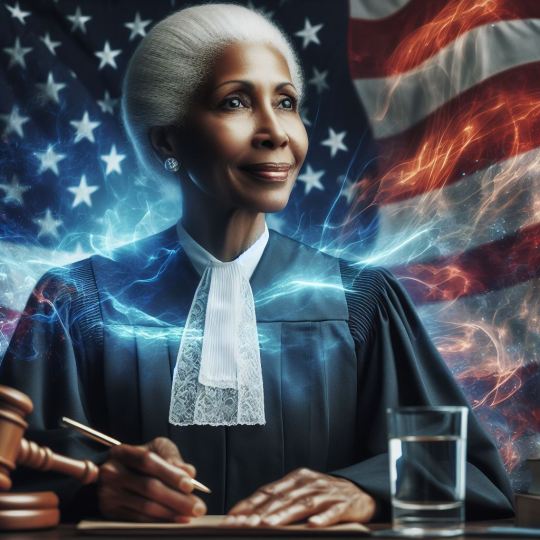
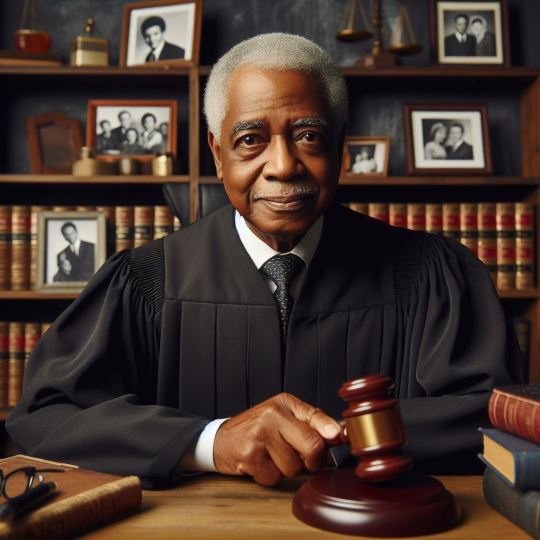


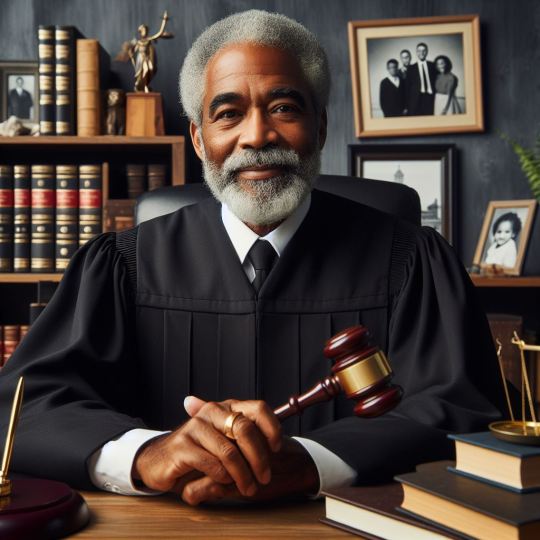





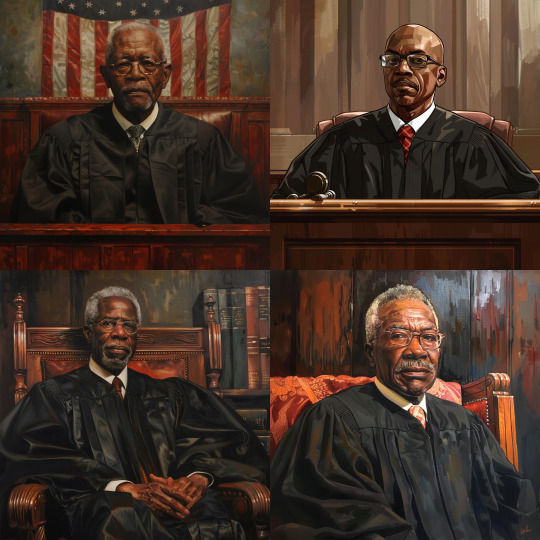

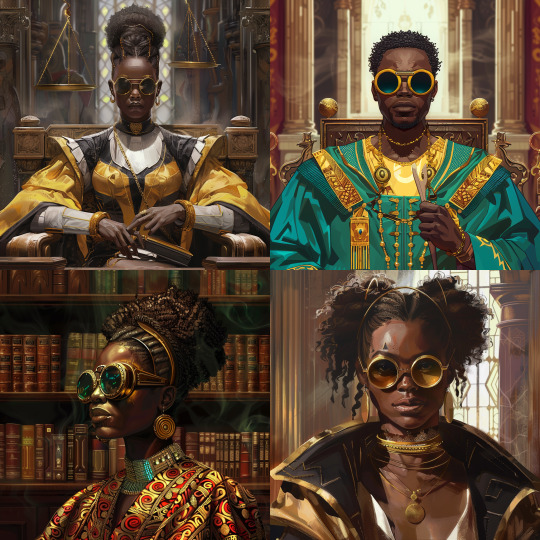




From Perplexity:
Some famous African American judges include:
Thurgood Marshall: He was the first African American to serve on the Supreme Court of the United States, appointed by President Lyndon B. Johnson in 1967. He served until 1991[2].
Ketanji Brown Jackson: She is a current federal judge who has been nominated to the Supreme Court of the United States by President Joe Biden in 2022. Prior to this nomination, she served as a federal judge on the United States District Court for the District of Columbia[2].
Clarence Thomas: He is an Associate Justice of the Supreme Court of the United States, having been appointed by President George H. W. Bush in 1991[2].
These are just a few examples of the many African American judges who have made significant contributions to the U.S. judicial system[1][2].
Citations:
[1] https://www.naacpldf.org/black-judges-history/
[2] https://en.wikipedia.org/wiki/List_of_African_American_federal_judges
[3] https://www.uscourts.gov/news/2023/02/09/african-american-judges-offer-life-lessons
[4] https://www.ojp.gov/ncjrs/virtual-library/abstracts/black-judges-justice-perspectives-bench
[5] https://www.supremecourt.ohio.gov/education/civic-ed/celebrating-black-history/
Here are five other African American judges:
Constance Baker Motley: She was the first African American woman to serve as a federal judge. Motley was appointed to the United States District Court for the Southern District of New York in 1966[1][2].
Reggie B. Walton: He is a judge on the United States District Court for the District of Columbia. Walton has been involved in high-profile cases and has served on the Foreign Intelligence Surveillance Court[5].
Julie A. Robinson: She is a judge on the United States District Court for the District of Kansas. Robinson was the first African American to serve as a federal judge in the state of Kansas[5].
Roger L. Gregory: He is the Chief Judge of the United States Court of Appeals for the Fourth Circuit. Gregory was the first African American to serve on the Fourth Circuit[5].
Leon Higginbotham: He was a prominent African American judge who served as a federal judge on the United States District Court for the Eastern District of Pennsylvania and later as Chief Judge of the Third Circuit Court of Appeals[1][2].
These judges have made significant contributions to the U.S. judicial system and have played pivotal roles in shaping legal history.
Citations:
[1] https://www.ojp.gov/ncjrs/virtual-library/abstracts/black-judges-justice-perspectives-bench
[2] https://www.naacpldf.org/black-judges-history/
[3] https://mcca.com/resources/reports/federal-judiciary/african-american-judges-by-president/
[4] https://en.wikipedia.org/wiki/List_of_African_American_federal_judges
[5] https://www.uscourts.gov/news/2023/02/09/african-american-judges-offer-life-lessons
#black history month#blackhistorymonth#africanamericanhistory#justice#dalle3#midjourney#afrofuturism
1 note
·
View note
Text
DO YOU WANT TO Try a New Sport - Parasailing?
Parasailing is one of the adventure sports Tracy Chamberlain Higginbotham has yet to try so she is inviting other women to join her on this adventure.
The event will take place on Saturday, July 15th in Lake George, NY. In order to book the event, we need to see who is interested in it so we can call and start the booking. If you have any interest in joining us, please register and we will send you details.
The cost will run between $100-$130 and will include parasailing, snacks, beverages, and networking.
To get a count to secure a date and time, please register your name and interest at this link: Women TIES Events
0 notes
Text
Favoring the British Crown: enslaved Blacks, Annapolis, and the run to freedom [Part 2]
Continued from Part 1
Reprinted from my History Hermann WordPress blog.
© 2016-2023 Burkely Hermann. All rights reserved.
Notes
[1] Grumbelly was related to Capt. Keelings (of Princess Ann/Anne County, VA), with some of the people in bondage running away to join the British lines including Argyll, who joined Royal Artillery Department, and Robert. Grumbelly is also within this book. It would make sense it is Virginia's Eastern Shore rather than Maryland's, although this cannot be confirmed. William was undoubtedly one of many who was part of a small plantation within this area.
[2] Others would be evacuated on the La Aigle. His bio says that "William Keeling is assumed to be the husband of Pindar Keeling. They travel near to each other on board the Clinton and despite the presence of other Keelings, they are not listed in the Birchtown Muster." Perhaps they settled in a different area or died on the voyage North. Pindar was formerly bound to a Norfolk slaveowner named Willis Ball. One transcript of the manifest says "William Keeling, 40, feeble fellow. Formerly the property of Grumbelly Keeling of the East Shore, Virginia; left him 6 years ago. GBC." This being the case, then it makes sense that he cannot be found in Maryland records. It also clarifies that on 31 July 1783 the Clinton was Clinton bound for Annapolis [Royal, Nova Scotia] & St. John's [Saint John, New Brunswick]. This means it was going to Nova Scotia ultimately. The GHOTES Genealogy and History of the Eastern Shore group on Facebook lists 38 enslaved blacks who had left New York, originally enslaved in the Eastern Shore (presumably Virginia's).
[3] The word "loyalist" is used in quotation marks as it is an inexact term, and like Patriot it was used positively by those supporting the British Crown. Instead, the term supporter of the British Crown or any of its derivatives is used instead.
[4] Alan Taylor, American Revolutions: A Continental History, 1750-1804 (New York: W.W. Norton & Company, 2016), 21-22; A. Leon Higginbotham, Jr., In the Matter of Color: Race & The American Legal Process: the Colonial Period (New York: Oxford University Press, 1980), 91-95, 98-99.
[5] Specifically referring to Abbaco (John Rootes, Benjamin Guy), and unknown location (Solomon Slaughter, William Causins, Francis Wright, John Morris, Thomas Fisher. Here the locations of those included in the above chart: Norfolk, Virginia (John Hirst, Matthew Godfrey, Robert Gilmore, Samuel Bush [Boush], John Willoughby, David McClaurin, William Mallery, William Egerson, James Hunter, Edward Hack Moseley [Mozely], Joseph Mitchell, Thomas Newton Snr, Robert Barns, Charles Connor, Samuel Elliot, Simon Hogwood, William Hancock, Archibald Campbell or Arthur Campbell., Thomas Hoggart/Hogwood, Mr. Scarborough, Stephen Tankard, William Hogwood/Hopgood Sr.); Nansemond, Virginia (Mills Wilkinson, Henry Burgess, Solomon Sheppard, Willis Wilkinson); Crane Island, Virginia (William Connor, George Robertson, Andrew Stewart [Stuart]); Portsmouth, Virginia (Willis Wilson, Andrew Sproule, Richard Brown); South Carolina (Captain Hullet, Bland Steward); Princess Anne/Ann County, Virginia (Edward Moseley, John Loveat); Pennsylvania (James Stewart); Mecklenburgh, Virginia (Richard Sweepston); Dismal Swamp (James Wright Moore); Petersburg, Virginia (John Holloway); Tanners Creek, Virginia (Anthony Walker [Walke]); Isle of Wight (Richard Jordan, Andrew Mckay); Suffolk, Virginia (Lambert Reddick); Greatbridge, Virginia (Alexander Foreman).
#british crown#black history#canada#us history#enslavement#slavery#freedom#revolutionary war#american revolution#18th century
0 notes
Text
What I’m Reading
BOOKS OF JULY
Betraying Big Brother: The Feminist Awakening in China by Leta Hong Fincher (NF)
Trail of Lightning by Rebecca Roanhorse
Murder in Old Bombay by Nev March
This Mournable Body by Tsitsi Dangarembga
Deaf Republic by Ilya Kaminsky (P)
The Paris Apartment by Lucy Foley
Sundial by Catriona Ward **
Bullet Train by Kotaro Isaka **
Rifqa by Mohammed El-Kurd (P)
Graphic Novels:
Nichijou Vol.1 by Keiichi Arawi
The Way of the Househusband Vol.1-3 by Kousuke Oono
Spy Family Vol.5-6 by Tatsya Endo **
HoriMiya Vol.1 by Hero & Daisuke Hagiwara
Suncatcher by Jose Pimienta (GN)
Caste Heaven Vol.2 by Chise Ogawa
Given Vol.3-4 by Natsuki Kizu **
(110 books read / 150 books goal)
currently reading:
The Daily Stoic: 366 Meditations on Wisdom, Perseverance, and the Art of Living by Ryan Holiday & Stephen Hanselman (NF)
Burning Girls and Other Stories by Veronica Schanoes (SS)
Beloved by Toni Morrison
Midnight in Chernobyl: The Untold Story of the World’s Greatest Nuclear Disaster by Adam Higginbotham (NF)
Fire Bringer by David Clement-Davies
* - re-read // ** - 4+ star-rating on my goodreads (recommended)
GN - graphic novel // NF - non-fiction // P - poetry
SS - short story collection // AB - audiobook
TBR:
Shipped by Angie Hockman
DeTransition, Baby by Torrey Peters
When We Were Magic by Sarah Gailey
Call of the Night Vol.1-3 by Kotoyama (GN)
My Little Monster Vol.1-3 by Robiko (GN)
WHAT ARE YOU READING? :D
#books#bookworm#reading#TBR#what are you reading#my books#2022#july#august#reading year 2022#books of 2022#novels#graphic novels#fiction#non fiction#poetry#manga#contemporary fiction#romance#fantasy#dystopian fiction#historical fiction#history#feminism
1 note
·
View note
Photo

Julie Higginbotham. Bill Morley. Brunswick. 1976
I Am Collective Memories • Follow me, — says Visual Ratatosk
#BW#Black and White#Preto e Branco#Noir et Blanc#黒と白#Schwarzweiß#retro#vintage#Julie Higginbotham#Bill Morley#Brunswick#1976#1970s#70s#queer#portrait#肖像#画像#retrato#Porträt
13 notes
·
View notes
Photo
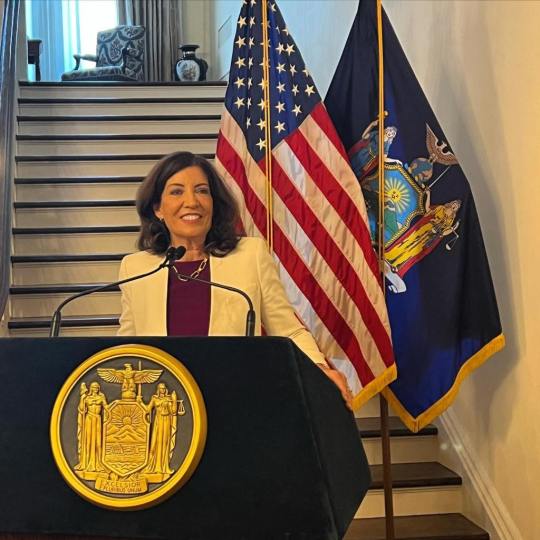
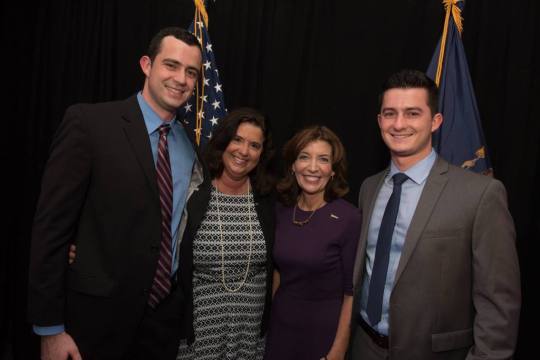

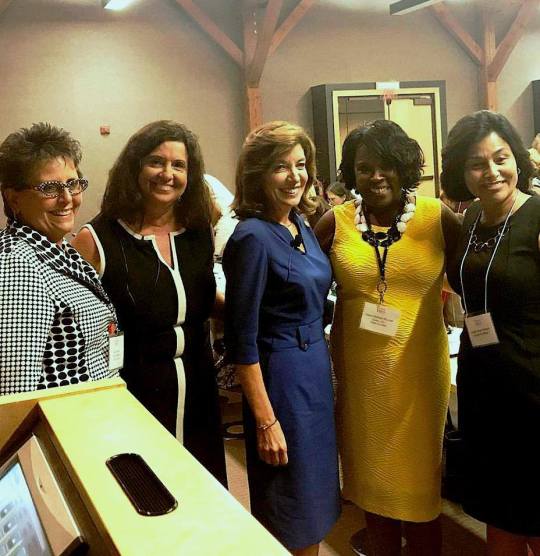
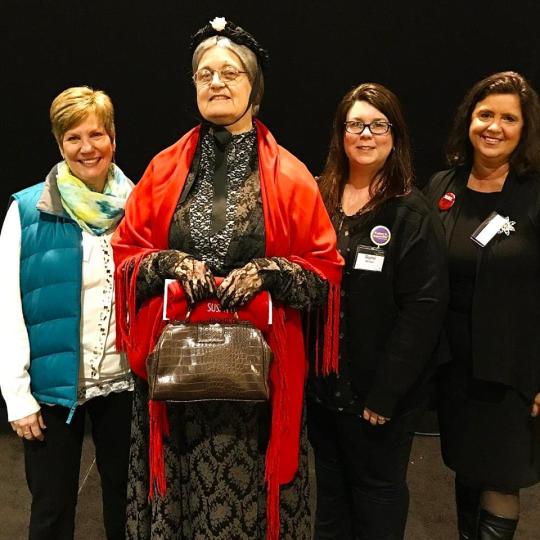
(via 175 Years and More to Go: Women's Equality)
#Seneca Falls Women's Rights Convention#Governor Kathy Hochul#New York State#Women's Rights#Tracy Chamberlain Higginbotham#Tracy Higginbotham#female leaders#ERA#equality#women's pay equality#Seneca Falls#suffrage#Friday Feelings#July 20th#July 21st#Seneca Falls NY#changing the world for women
0 notes
Text
Sensory-Friendly Theatre, or “How can I help you be you?”
Sensory-Friendly Theatre, or “How can I help you be you?”
Preview: Tropical Secrets: Holocaust Refugees in Cuba
By Perry Tannenbaum
Tyler made a surprising and daring decision at ImaginOn before attending the Sunday matinee of My Wonderful Birthday Suit. His mom, Ilana, had been sure that Tyler would want to wear noise-cancelling headphones at the performance, so I had to assure her that Children’s Theatre would be offering them prior to the show.…

View On WordPress
#Adrian Thornburg#Brynn#David Winitsky#Frank Dominguez#Gloria Bond Clunie#Ilana#Isabel Gonzalez#Julie Higginbotham#Kaitlin Gentry#Laura Beth Lee#Louise Lawson#McColl Family Theatre#Raphael Torn#Tom Scott#Tyler
0 notes
Photo

Joshua Higginbotham
Gender: Male
Sexuality: Gay
DOB: 23 July 1996
Ethnicity: White - American
Occupation: Politician (Republican)
32 notes
·
View notes
Photo


On a day like this, 16 July 1517, Frances Grey (née Brandon), Duchess of Suffolk and Marchioness of Dorset, was born. The following text was written and published by the owners of “We Want a Series on Mary I Tudor”. Link below.
“July 16, 1517 was the birth of Frances Brandon, eldest daughter of Princess Mary Tudor and Charles Brandon, Duke of Suffolk at Hatfield. Frances is best remembered for being Jane Grey's mother though her historical reputation is in tatters thanks to myths perpetuated by popular fiction.
The truth as always is very different. Frances was a very practical woman but like her first royal cousin (our queen, Mary I) and their great-grandmother (Margaret Beaufort) she's been the victim of many myths.The most common was that she beat her children and that she hated Jane for not being born a boy. Frances never showed any indication that she was disappointed in any of her daughters.
Being a sixteenth century woman, she would have been happier if Jane had been born a boy but when it was clear that she and Henry would have no more children, they invested all their hopes and dreams on their three daughters, namely Jane as she showed more aptitude than her younger sisters.
The only known image of Frances is this one, the other portraits claiming to be her have often been put into question given the dates and clothing the sitter(s) is (or are) wearing.
Here's a good article on Frances Grey nee Brandon, Duchess of Suffolk and Marchioness of Dorset by Susan Higginbotham that dispels the rest of the myths: http://www.susanhigginbotham.com/.../the-maligned.../”
Link: https://www.facebook.com/208058875889812/photos/a.225156397513393/875935752435451
Fancast: Jessica Chastain as Lady Frances. Both images were taken from “Pinterest”, therefore I do not owe any of them.
#lady frances brandon#lady frances grey#duchess of suffolk#house of tudor#tudor dynasty#i honesty detest how people see her as a terrible woman based only on movies such as lady jane and a book out there who paints them badly#if we use reason we'll see there's more than history knows#most of the bad reputations some tudors seem to have are largely based on victorian's creators who sought to romancize their history#and also we have the bad tendency of looking at the past based on 21st century conceptions#ffs#tired of seeing frances as a bad mother#honestly to god...#the woman went through a lot and people can't even try seeing that
22 notes
·
View notes
Text
I’m curious about “respectability politics” and how it applies to variations on the “born this way“ / “it’s not a choice” argument for toleration of homosexuality.
I’ve heard that “respectability politics” was theorized by Evelyn Brooks Higginbotham in Righteous Discontent: The Women's Movement in the Black Baptist Church 1880-1920, which I have not read yet. (Although this might be a good time to start it, cause I’m just about to finish my current book!) My impression was that it referred to appeals to middle-class norms of respectability as a basis for claims to citizenship and protection and nondiscrimination under the law.
I associate the “it’s not a choice” discourse (and I’m not entirely sure if that’s a bit different from the “born this way” discourse) mostly with a counterargument to conservative Christian pronouncements about homosexuality in the US. I had previously rejected the idea that this argument was a form of “respectability politics,” because I didn’t think that “not being able to choose your sexuality” was a typical marker of middle-class respectable citizenship. I had instead described this argument as “toleration politics,” where, rather than being seen as meeting moral (or citizenship) requirements just as well as everyone else, a special exemption from the standard requirement was being requested based on a (tragic) inability to fulfill it.
But I’m thinking about some things I’ve read and feel like variations of these arguments (which each have their own particularity, but also some commonalities imo) may have more to do with respectability than I originally thought.
But the other part of the equation is that they may involve appeals to religious patriarchal moral authorities. And I’m curious about the relationship between patriarchal religious morality--which I would basically describe like that, although I’m trying to work “religious” out of it--and class and citizenship dynamics. Because it seems like, at least in Christianity (and also in Islam from what I know about it), the acknowledged orthodox sexual morality is patriarchal and doesn’t authorize sex outside heterosexual marriage, even if it overlooks it. (But what variations might I be overlooking because they’re not considered orthodox by more institutionalized authorities?) Is there an automatic link between orthodox patriarchal sexual morality and “middle-class respectability,” just because the former is taken as a basis for the later? In the US, appeals to Christian patriarchal morality are also important to citizenship given the influence of Christian conservatives in politics, but is this also/only about middle-class ideals? (This has all got me thinking about the argument I heard Naomi Goldenberg make on The Religious Studies Project that religions can be understood as vestigial states.) I’m also thinking of religious authority here in terms of patriarchal authority: is this a good way to think about it and how is it incomplete?
Anyway, there are some passages that have been fitting themselves together in my brain:
Karen, editor of Frauenliebe, used sexological concepts of congenital and acquired homosexuality to draw a strict boundary between the two. She argued that anyone seeking same-sex love out of enjoyment of transgression [acquired homosexuality] damaged society and should be "separated from the public." On the other hand, Karen continued, "Same-sex behavior, entered into voluntarily and clearly by both partners [congenital homosexuality], belongs, like every intimate heterosexual behavior, to the realm of things one accepts but does not talk about."[68] Karen also warned aspiring writers to avoid writing explicitly about sexual experience in their stories and essays.[69]
Categorical exclusion shaped a debate in Frauenliebe about bisexuality. Like prostitutes, bisexuals were excluded from homosexual community. Frauenliebe printed fifteen responses to a letter asking readers to express their view on women who had relationships with both sexes.[70] They saw homosexuality as moral and bisexuality as immoral. It was not only movement leaders who wanted to discipline sexual desire in their followers. Letters from readers grouped bisexual women with prostitutes and "sensual" heterosexual women, accusing all of seeking homosexual experiences out of curiosity or sensual desire rather than as an expression of inner character.[71] [...]
Vilification of bisexual women allowed women the opportunity to enter into the classification and definition work of sexology and to create a purified figure of the female homosexual suitable for political citizenship. The "sexual" in homosexual was tamed through strict denial that irresistible desire defined the category. Rejection of prostitutes and bisexuals allowed women to construct "female homosexuality" as materially and sexually pure. As a type, they argued, "true" homosexuals kept desire under the control of the individual will.
-- Marti M Lybeck, Desiring Emancipation: New Women and Homosexuality in Germany, 1890-1933, 2015 Fuller quote here. This one links sexual morality and citizenship most directly and perhaps in the most “respectable” way (the realm of things you don’t talk about).
To understand how MSM is read, it is important to examine how explicit and implicit boundaries are drawn around the category gay. Consider, for example, a passage from Paul Farmer in which he claims that, in recent years, there have been fewer HIV cases than predicted among gay men in the United States, a category he implicitly racializes as White via the contrast with “injection drug users, inner-city people of color, and persons originally from poor countries in sub-Saharan Africa or the Caribbean.”21(p47) He further excludes gay from poor and suggests that “males involved in prostitution are almost universally poor, and it may be their poverty, rather than their sexual preference, that puts them at risk of HIV infection. Many men involved in homosexual prostitution, particularly minority adolescents, do not necessarily identify as gay.”21(p47) With this juxtaposition, Farmer seems to suggest that same-gender behavior among poor men of color (especially youth) is sex work rather than sex for pleasure and is devoid of identity and community; same-gender behavior among White men is read as synonymous with gay identity.
Compare these assumptions with a recent ethnographic report on men at risk for HIV in Dakar, Senegal.22 While many of these “men who have sex with men” are poor and engage in sex work, the authors found that they have indigenous sexual-minority identities that are differentiated and socially meaningful. Senegalese sexual-minority identities serve as a basis for social organization, including, but not limited to, sexual roles. The authors describe ibbi as men who “tend to adopt feminine mannerism[s] and to be less dominant in sexual interactions,”22(p505) whereas yoos are men who “are generally the insertive partner.” They also stress that the categories have “more to do with social identity and status than with sexual practices.”22(p506) [...]
Is MSM a useful term for describing groups that eschew prominent LGB categories? Much has been made of the fact that men on the DL lead secret lives and do not consider themselves gay.25,26 But DL is not a behavioral category that can be conveyed as MSM. As Frank Leon Roberts has put it, “DL is . . . about performing a new identity and embracing a hip-hop sensibility [italics added].”27DL functions not as a nonidentity but as an alternative sexual identity and community denoting same-gender interest, masculine gender roles distinct from the feminized sissy or faggot, Black racial/ethnic identity, and a dissociation from both White and Black middle-class gay cultures.26–28
-- “The Trouble With “MSM” and “WSW”: Erasure of the Sexual-Minority Person in Public Health Discourse,“ by Rebecca M Young and Ilan H Meyer, published in American Journal of Public Health, July 2005. This one doesn’t deal with the “it’s not a choice" argument directly, but suggests who people might want to exclude and have actually excluded in practice from categories of “sexual orientation" and “born this way” gay identity.
Omar’s analysis of linguistic terms has direct impact upon the issue of interpretation of the Qur’an. This analysis, published in 1997, predated the El-Moumni Affair by four years, yet illustrates exactly the conflation of terms which the imam pronounced in that controversial interview. Omar writes, “Many words are used to express sexual relationships that take place between man-and-man or between woman-and-woman. . . . Whether in modern standard Arabic or local dialects, there are terms like sexual deviance (al-shudhudh al-jinsiyya) and sodomy (al-liwat) and also homosexuality (al-junusiyya). . . . The problem is that most people use these different terms as synonyms, creating a situation of naming experiences with names that do not really fit, thereby generating misunderstanding and confusion about the topic of sexual orientation. . . . I see the critical importance of writing about homosexuality as the attempt to remove these confusing mix-ups of terms and issues.”[15] In this crucial passage, Omar explains that his project is to differentiate between homosexuality and sodomy. In his understanding, the Qur’an condemns sodomy as the act of anal penetration rather than homosexuality as sexual orientation, while the Islamic legal tradition mistakenly conflates the two.[16]
The distinction between homosexuality and sodomy makes sense if one asserts that there is a psychological reality called sexual orientation, which is separate from and prior to any sexual act. He writes, “Sex is a phenomenon that happens by way of the body, whereas sexuality is a matter existing at the level of psyche and personality.”[17] In his analysis, only a person with a psychological identity of constant and exclusive same-sex desire should be called “homosexual” (junusi in his terminology, or mithli jinsiyya in the Arabic terminology of other contemporary writers). The person who performs same-sex acts without doing so within the framework of exclusively homosexual orientation can be described as sodomite (luti). It is this behavior that characterizes the Tribe of Lot, who wanted to perform same-sex acts for reasons other than as a genuine expression of their sexual identity and psychological persona.[18] Omar’s analysis challenges classical Islamic law. Jurists instituted practical norms forbidding same-sex acts such as sodomy (liwat), with the assumption that those performing them were, in their inmost character, actually heterosexual (or at least functionally bisexual).
--Living Out Islam: Voices of Gay, Lesbian, and Transgender Muslims, by Scott Siraj al-Haqq Kugle, 2014. I read this one yesterday. I can’t be sure whether bisexual people are considered at all, even as a footnote, in Omar’s analysis, and if they are, whether their pursuit of same-gender sex would be categorized with the acceptable homosexuals or unacceptable heterosexuals. I’m not sure here if Omar has in mind for sodomy rape specifically, or any anal penetration, or sexual activity (anal or not) between men that’s perceived as ‘voluntary’ rather than following the demands of exclusive sexual orientation.
But I think it’s interesting how intent/context/constraint of orientation is factored into ethical analysis here and in the first quote, in a way that accepts some forms of or reasons for having same-gender sex as unethical or socially disruptive. And in the first quote, these ‘voluntary’ expressions are imagined to be rooted in hypersexuality and sex work, distinctly un-middle-class. The last quote is engaging with Islamic legal traditions as well as theology, and I don’t know much about how this articulates with “citizenship,” although the author was writing in the Netherlands where LGBT rights were guaranteed by secular authorities.
Anyway, that’s what was bouncing around my head last night.
42 notes
·
View notes
Photo
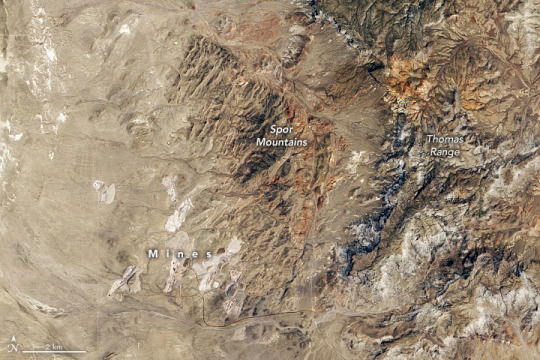

Digging Beryllium for James Webb When the James Webb Space Telescope (JWST) is launched into space later this year, it will carry 18 gold-plated hexagonal mirrors that will help astronomers see back more than 13 billion years—a time when the first stars and galaxies were forming from the darkness of the early universe. Those mirrors are made of beryllium, a relatively rare metal that is one-third the weight of aluminum but six times stronger than steel. The beryllium used in JWST came from the area shown here — the Spor Mountain mining area in Utah. The Operational Land Imager (OLI) on Landsat 8 acquired this natural-color image of open-pit mines in the area on July 8, 2021. In the rocky ground around Spor Mountain, most beryllium is found within minerals such as bertrandite and beryl that formed 25 million years ago as lava cooled after a volcanic eruption. After excavation, the bertrandite ore gets shipped to a nearby plant, where it is crushed into a powder and mixed with water as part of a process to separate the beryllium out. Beryllium appealed to the engineers of the James Webb Space Telescope because the stiff, lightweight metal maintains a stable shape even at extremely low temperatures. Insulated by a sun shield, JWST will operate at about 30 K (-406°F) as it orbits about 1.5 million kilometers (1 million miles) from Earth. The metal is also tough enough to withstand collisions with tiny particles in space called micrometeoroids. In the photo below, a NASA engineer looks on as the first six flight ready primary mirror segments for James Webb are prepped to begin cryogenic testing. NASA has a long history of using beryllium from Spor Mountain. In the agency’s early years, engineers used it in the heat shield for the Project Mercury return capsule. Project Gemini used it in shingles that protected parachute enclosures. Later it was used in the space shuttles, the International Space Station, the Spirit and Opportunity rovers that landed on Mars, the Spitzer Space Telescope, and other missions. Spor Mountain is the largest source of beryllium in the United States and the world. According to some estimates, Spor yields about 85 percent of the total produced globally. Other countries that produce beryllium include China and Mozambique. NASA Earth Observatory image by Lauren Dauphin, using Landsat data from the U.S. Geological Survey. NASA photo by David Higginbotham. Story by Adam Voiland.
4 notes
·
View notes
Text
MP's who voted against free school meals: Part 1
Nigel Adams (Selby and Ainsty),
Bim Afolami (Hitchin and Harpenden),
Adam Afriyie (Windsor),
Imran Ahmad Khan (Wakefield),
Nickie Aiken (Cities of London and Westminster),
Peter Aldous (Waveney), Lucy Allan (Telford),
David Amess (Southend West), Lee Anderson (Ashfield),
Stuart Anderson (Wolverhampton South West),
Stuart Andrew (Pudsey),
Edward Argar (Charnwood),
Sarah Atherton (Wrexham),
Victoria Atkins (Louth and Horncastle),
Gareth Bacon (Orpington),
Richard Bacon (South Norfolk),
Kemi Badenoch (Saffron Walden),
Shaun Bailey (West Bromwich West),
Duncan Baker (North Norfolk),
Steve Baker (Wycombe),
Harriett Baldwin (West Worcestershire),
Steve Barclay (North East Cambridgeshire),
Simon Baynes (Clwyd South),
Aaron Bell (Newcastle-under-Lyme),
Scott Benton (Blackpool South),
Paul Beresford (Mole Valley),
Jake Berry (Rossendale and Darwen),
Saqib Bhatti (Meriden),
Bob Blackman (Harrow East),
Crispin Blunt (Reigate),
Peter Bone (Wellingborough),
Peter Bottomley (Worthing West),
Andrew Bowie (West Aberdeenshire and Kincardine),
Ben Bradley (Mansfield),
Karen Bradley (Staffordshire Moorlands),
Graham Brady (Altrincham and Sale West),
Suella Braverman (Fareham),
Jack Brereton (Stoke-on-Trent South),
Andrew Bridgen (North West Leicestershire),
Steve Brine (Winchester),
Paul Bristow (Peterborough),
Sara Britcliffe (Hyndburn),
James Brokenshire (Old Bexley and Sidcup),
Anthony Browne (South Cambridgeshire),
Fiona Bruce (Congleton),
Felicity Buchan (Kensington),
Robert Buckland (South Swindon),
Alex Burghart (Brentwood and Ongar),
Conor Burns (Bournemouth West),
Rob Butler (Aylesbury),
Alun Cairns (Vale of Glamorgan),
Andy Carter (Warrington South),
James Cartlidge (South Suffolk),
William Cash (Stone),
Miriam Cates (Penistone and Stocksbridge),
Maria Caulfield (Lewes), Alex Chalk (Cheltenham),
Rehman Chishti (Gillingham and Rainham),
Jo Churchill (Bury St Edmunds),
Greg Clark (Tunbridge Wells),
Simon Clarke (Middlesbrough South and East Cleveland),
Theo Clarke (Stafford),
Brendan Clarke-Smith (Bassetlaw),
Chris Clarkson (Heywood and Middleton),
James Cleverly (Braintree),
Therese Coffey (Suffolk Coastal),
Damian Collins (Folkestone and Hythe),
Alberto Costa (South Leicestershire),
Robert Courts (Witney),
Claire Coutinho (East Surrey),
Geoffrey Cox (Torridge and West Devon),
Virginia Crosbie (Ynys Mon),
James Daly (Bury North),
David T C Davies (Monmouth),
James Davies (Vale of Clwyd),
Gareth Davies (Grantham and Stamford),
Mims Davies (Mid Sussex),
Philip Davies (Shipley),
David Davis (Haltemprice and Howden),
Dehenna Davison (Bishop Auckland),
Caroline Dinenage (Gosport),
Sarah Dines (Derbyshire Dales),
Jonathan Djanogly (Huntingdon),
Michelle Donelan (Chippenham),
Nadine Dorries (Mid Bedfordshire),
Steve Double (St Austell and Newquay),
Oliver Dowden (Hertsmere),
Jackie Doyle-Price (Thurrock),
Richard Drax (South Dorset),
Flick Drummond (Meon Valley),
David Duguid (Banff and Buchan),
Iain Duncan Smith (Chingford and Woodford Green),
Philip Dunne (Ludlow),
Mark Eastwood (Dewsbury),
Ruth Edwards (Rushcliffe),
Michael Ellis (Northampton North),
Tobias Ellwood (Bournemouth East),
Natalie Elphicke (Dover),
George Eustice (Camborne and Redruth),
Luke Evans (Bosworth),
David Evennett (Bexleyheath and Crayford),
Ben Everitt (Milton Keynes North),
Michael Fabricant (Lichfield),
Laura Farris (Newbury),
Simon Fell (Barrow and Furness), Katherine Fletcher (South Ribble), Mark Fletcher (Bolsover), Nick Fletcher (Don Valley), Vicky Ford (Chelmsford), Kevin Foster (Torbay),
Mark Francois (Rayleigh and Wickford),
Lucy Frazer (South East Cambridgeshire),
George Freeman (Mid Norfolk),
Mike Freer (Finchley and Golders Green),
Richard Fuller (North East Bedfordshire),
Marcus Fysh (Yeovil),
Mark Garnier (Wyre Forest),
Nusrat Ghani (Wealden),
Nick Gibb (Bognor Regis and Littlehampton),
Peter Gibson (Darlington),
Jo Gideon (Stoke-on-Trent Central),
Cheryl Gillan (Chesham and Amersham),
John Glen (Salisbury),
Robert Goodwill (Scarborough and Whitby),
Michael Gove (Surrey Heath),
Richard Graham (Gloucester),
Helen Grant (Maidstone and The Weald),
James Gray (North Wiltshire),
Chris Grayling (Epsom and Ewell),
Chris Green (Bolton West),
Damian Green (Ashford),
Andrew Griffith (Arundel and South Downs),
Kate Griffiths (Burton),
James Grundy (Leigh),
Jonathan Gullis (Stoke-on-Trent North),
Luke Hall (Thornbury and Yate),
Stephen Hammond (Wimbledon),
Matt Hancock (West Suffolk),
Greg Hands (Chelsea and Fulham),
Mark Harper (Forest of Dean),
Rebecca Harris (Castle Point),
Trudy Harrison (Copeland),
Sally-Ann Hart (Hastings and Rye),
Simon Hart (Carmarthen West and South Pembrokeshire),
John Hayes (South Holland and The Deepings),
Oliver Heald (North East Hertfordshire),
Chris Heaton-Harris (Daventry),
Gordon Henderson (Sittingbourne and Sheppey),
Darren Henry (Broxtowe),
Antony Higginbotham (Burnley),
Damian Hinds (East Hampshire),
Kevin Hollinrake (Thirsk and Malton),
Philip Hollobone (Kettering),
Adam Holloway (Gravesham),
Paul Holmes (Eastleigh),
John Howell (Henley),
Paul Howell (Sedgefield),
Nigel Huddleston (Mid Worcestershire),
Eddie Hughes (Walsall North),
Jane Hunt (Loughborough),
Jeremy Hunt (South West Surrey),
Tom Hunt (Ipswich),
Alister Jack (Dumfries and Galloway),
Sajid Javid (Bromsgrove),
Ranil Jayawardena (North East Hampshire),
Mark Jenkinson (Workington),
Andrea Jenkyns (Morley and Outwood),
Robert Jenrick (Newark),
Boris Johnson (Uxbridge and South Ruislip),
Caroline Johnson (Sleaford and North Hykeham),
Gareth Johnson (Dartford), David Johnston (Wantage),
Andrew Jones (Harrogate and Knaresborough),
Fay Jones (Brecon and Radnorshire),
David Jones (Clwyd West),
Marcus Jones (Nuneaton),
Simon Jupp (East Devon),
Daniel Kawczynski (Shrewsbury and Atcham),
Alicia Kearns (Rutland and Melton),
Gillian Keegan (Chichester),
Julian Knight (Solihull),
Greg Knight (East Yorkshire),
Danny Kruger (Devizes),
Kwasi Kwarteng (Spelthorne),
John Lamont (Berwickshire, Roxburgh and Selkirk),
Robert Largan (High Peak),
Andrea Leadsom (South Northamptonshire),
Edward Leigh (Gainsborough),
Ian Levy (Blyth Valley),
Andrew Lewer (Northampton South),
Brandon Lewis (Great Yarmouth),
Ian Liddell-Grainger (Bridgwater and West Somerset),
Chris Loder (West Dorset),
Mark Logan (Bolton North East),
Marco Longhi (Dudley North),
Julia Lopez (Hornchurch and Upminster),
Jack Lopresti (Filton and Bradley Stoke),
Jonathan Lord (Woking),
Craig Mackinlay (South Thanet),
Cherilyn Mackrory (Truro and Falmouth),
Rachel Maclean (Redditch),
Alan Mak (Havant),
Kit Malthouse (North West Hampshire),
Anthony Mangnall (Totnes),
Scott Mann (North Cornwall),
Julie Marson (Hertford and Stortford),
Theresa May (Maidenhead),
Jerome Mayhew (Broadland),
Karl McCartney (Lincoln),
Mark Menzies (Fylde),
Johnny Mercer (Plymouth, Moor View),
Huw Merriman (Bexhill and Battle),
Stephen Metcalfe (South Basildon and East Thurrock),
Robin Millar (Aberconwy), Maria Miller (Basingstoke),
Amanda Milling (Cannock Chase),
Nigel Mills (Amber Valley),
Andrew Mitchell (Sutton Coldfield),
Gagan Mohindra (South West Hertfordshire),
Robbie Moore (Keighley),
Penny Mordaunt (Portsmouth North),
David Morris (Morecambe and Lunesdale),
James Morris (Halesowen and Rowley Regis),
Wendy Morton (Aldridge-Brownhills),
Kieran Mullan (Crewe and Nantwich),
David Mundell (Dumfriesshire, Clydesdale and Tweeddale),
Sheryll Murray (South East Cornwall),
Andrew Murrison (South West Wiltshire),
Robert Neill (Bromley and Chislehurst),
Caroline Nokes (Romsey and Southampton North),
Jesse Norman (Hereford and South Herefordshire),
Neil O'Brien (Harborough),
Guy Opperman (Hexham),
Owen Paterson (North Shropshire),
Mark Pawsey (Rugby),
Mike Penning (Hemel Hempstead),
John Penrose (Weston-super-Mare),
Chris Philp (Croydon South),
Christopher Pincher (Tamworth),
Rebecca Pow (Taunton Deane),
Victoria Prentis (Banbury),
Mark Pritchard (The Wrekin),
Jeremy Quin (Horsham),
Will Quince (Colchester),
Tom Randall (Gedling),
John Redwood (Wokingham),
Jacob Rees-Mogg (North East Somerset),
Nicola Richards (West Bromwich East),
Angela Richardson (Guildford),
Rob Roberts (Delyn),
Laurence Robertson (Tewkesbury),
Mary Robinson (Cheadle),
Andrew Rosindell (Romford),
Lee Rowley (North East Derbyshire),
Dean Russell (Watford),
David Rutley (Macclesfield),
Gary Sambrook (Birmingham, Northfield),
Selaine Saxby (North Devon), Paul Scully (Sutton and Cheam),
Bob Seely (Isle of Wight), Andrew Selous (South West Bedfordshire),
10 notes
·
View notes